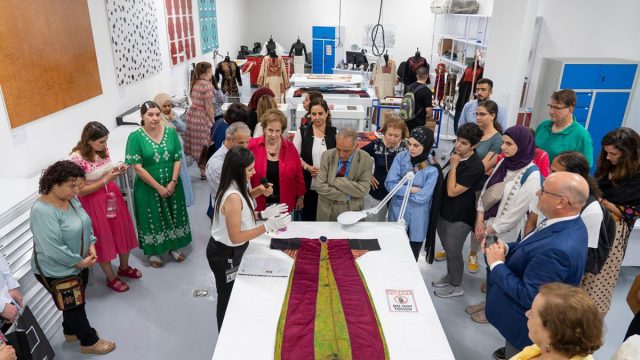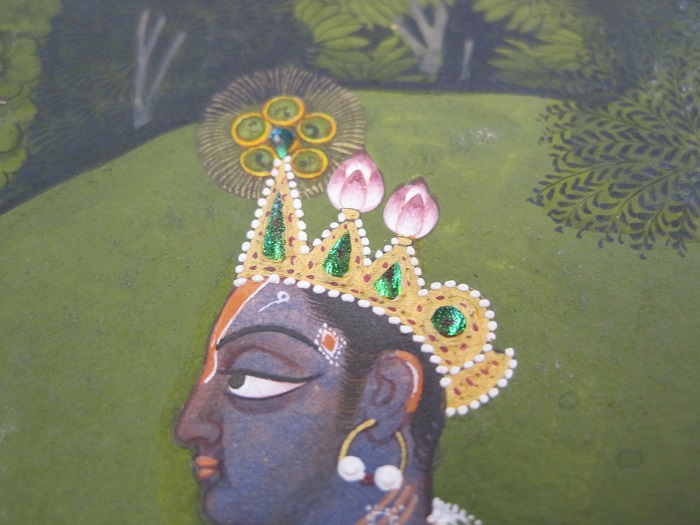
Here in Paper Conservation one of my tasks is mounting some objects from the South and South-East Asia Collections. While preparing to mount some of these items I noticed some unusually bright green jewels in three paintings. Since I had to check these works under the microscope anyway to make sure the paint was stable, I quickly took a closer look to see if I could identify the technique or material used in the jewels while I was at it.
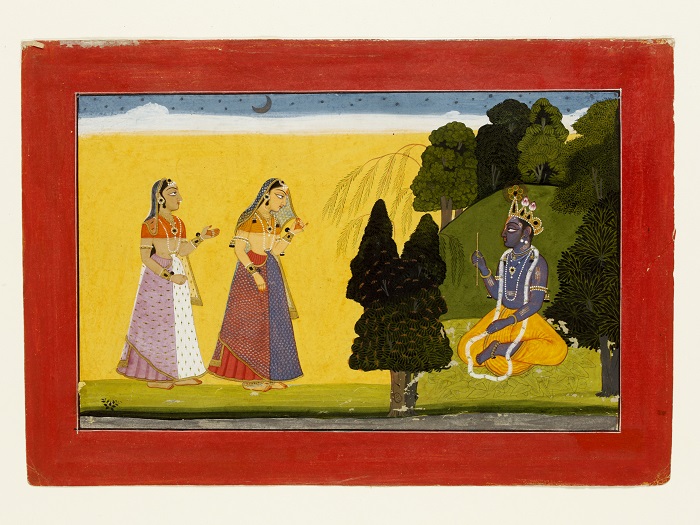
Under magnification it looked like the jewels had been cut to shape and glued to the painting, and had many tiny dimples over their surface.
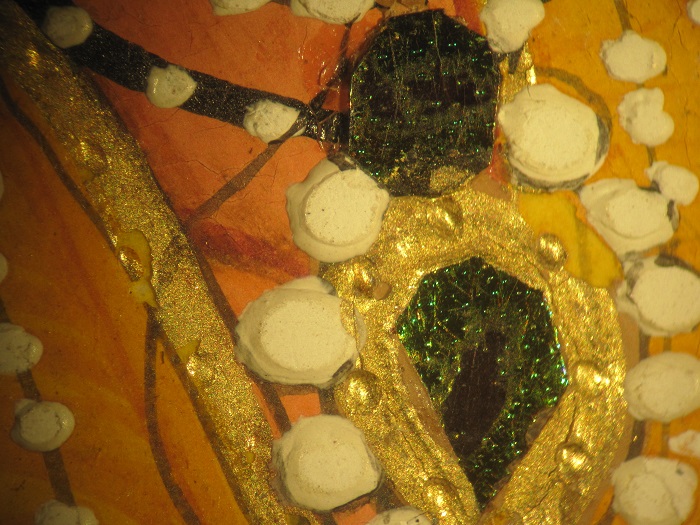
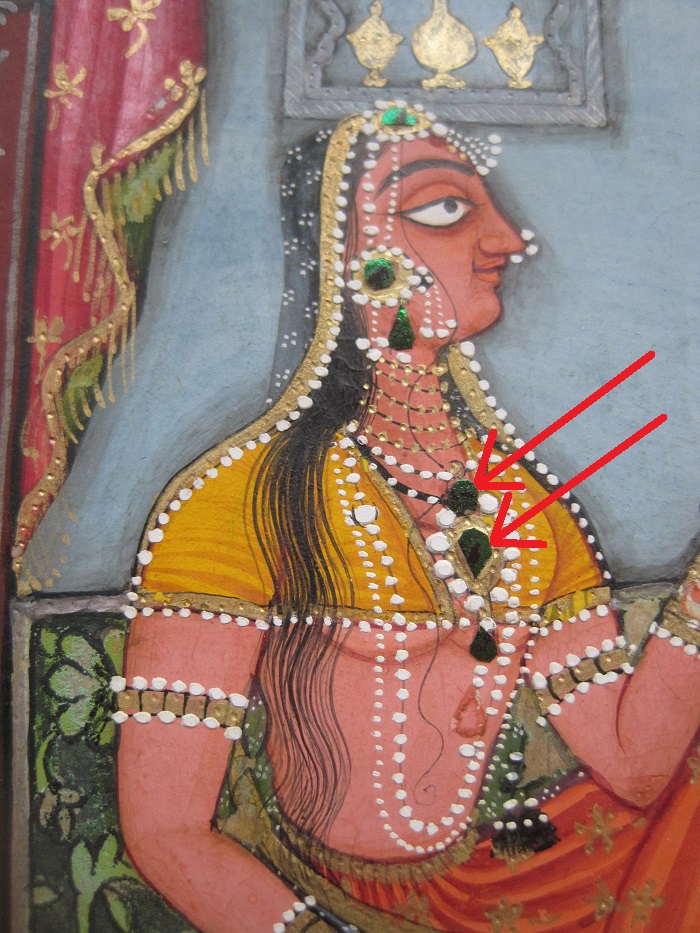
I knew that beetle wings were sometimes used in Indian miniature paintings and that paintings in this series were known to have them, but had never seen this material in person before, so I did a bit of research and found some examples that showed similar tiny dimples on the surface, to compare with what I could see on the objects in front of me.
There are many beetles that have green iridescence, but here is a common one: http://en.wikipedia.org/wiki/Sternocera_aequisignata
It’s always interesting to come across a new-to-me material and think about how I might go about conserving it, although in this case I was pleased that no conservation was necessary beyond safe mounting, and I could just appreciate the beautiful application, and changing tones, of the jewels.
Some more images just because they’re such lovely striking colours:
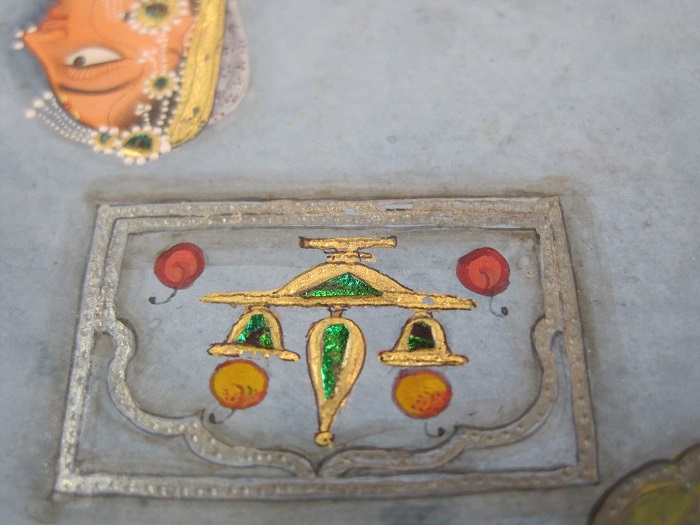
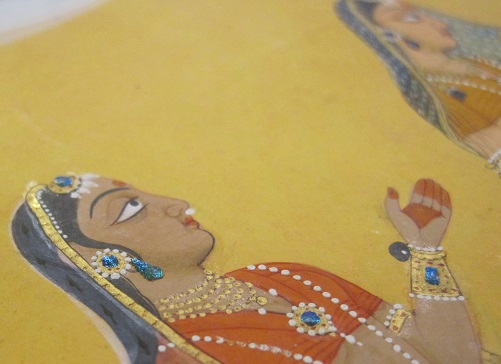
If you want to explore this material, there are lots more uses of beetle wings in the V&A collections.


